'Citizen Science Vacations' Are Trending — and These Cool New Trips Might Make You a Better Person
As interest grows in protecting Earth’s fragile resources, travel companies have broadened their “citizen science” initiatives. On a trip to Portugal, one writer leans into the trend by lending a hand.
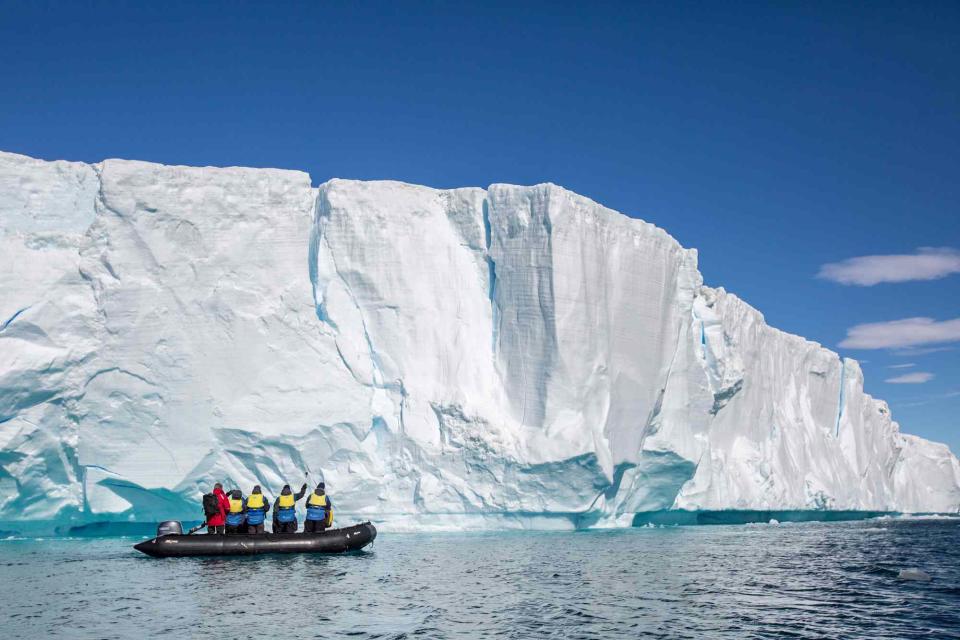
Michael Baynes/Courtesy of Aurora Expeditions
Surveying the Weddell Sea ice with Aurora Expeditions.Hiking on Pico, an island in the Azores, my family and I were surprised to encounter a band of government biologists. They were at work releasing migratory seabirds known as Cory’s shearwaters. Called cagarros in Portuguese, the birds flock to the archipelago to nest in its mountainous lava-rock landscapes.
But when fledglings are ready to fly, they often seek out the shoreline, leaving them vulnerable to automobiles traveling on roads that ring islands like Pico. The scientists encouraged us to take a cardboard box in case we came across a stranded or wounded bird, part of an Azores-wide citizen-science campaign called S.O.S. Cagarro, which rescues and studies as many as 6,400 Cory’s shearwaters annually.
The box remained forgotten in our rental car for days until we, too, encountered a frightened bird, cowering behind a stone wall in a small village. We were able to capture the feisty creature and deliver it to a nearby fire station, which was a designated collection point for the program. There, a grateful naturalist rewarded our donation with another empty box. The work of conservation, it seems, is never complete.
The experience wasn’t one we’d anticipated while planning our trip, but since we’ve returned home, it has become a go-to story about our time in the Azores. Our small contribution to the work of S.O.S. Cagarro may have been incidental, but these days there’s a growing movement to engage everyday travelers in the work of citizen science.
“By inviting guests to participate in research that increases awareness of climate change, we hope to create ambassadors who contribute to the planet’s preservation,” says Verena Meraldi, chief scientist at Hurtigruten Expeditions, which has supported seaweed surveys on South Georgia, an island in the South Atlantic, and contributed observations of the northern lights to a global database set up to track the phenomenon.
These days, there’s a citizen-science experience for almost any interest — and opportunities to pitch in, whether you’re on a cruise in the polar regions or a wine-tasting tour in Europe.
Studying at sea
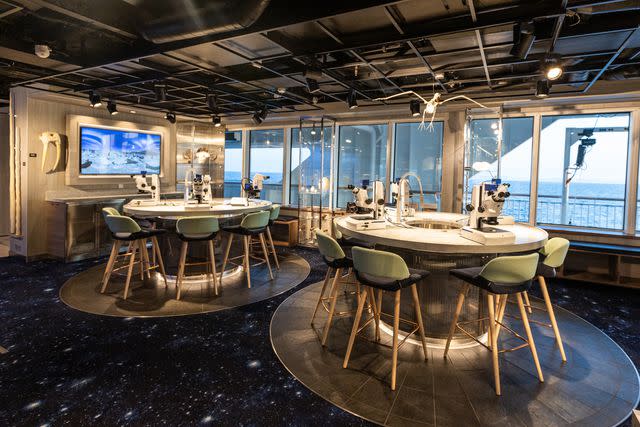
OSCAR FARRERA GONZALEZ/COURTESY OF HURTIGRUTEN EXPEDITIONS
The Science Center aboard Hurtigrutenâs Roald Amundsen.Cruise lines have not only embraced these efforts but also made them central to many itineraries. Viking, for example, has built labs on twin expedition ships, Viking Octantis and Viking Polaris, in which guests can search for microplastics in water samples or monitor real-time data recorded by weather balloons launched from the vessels. Viking shares this intel with organizations such as the National Oceanic & Atmospheric Administration (NOAA) and the Norwegian Institute for Water Research. Four Viking crew members recently published a scientific paper that details how cruise ships, and the submersible vehicles they often carry, represent a tremendous opportunity for future research. To take one example, passengers and crew of the Octantis made multiple sightings of the elusive giant phantom jellyfish during dives off the coast of Antarctica in 2022.
Another line, Aurora Expeditions, participates in seven ongoing citizen-science projects, including its collaboration with the Big Microplastic Survey, a global study that aims to map the distribution and toxicity of waterborne plastics by scouring shorelines. The line also monitors phytoplankton in Antarctic fjords, forwarding data to researchers who track how melting glaciers affect this vital food source.
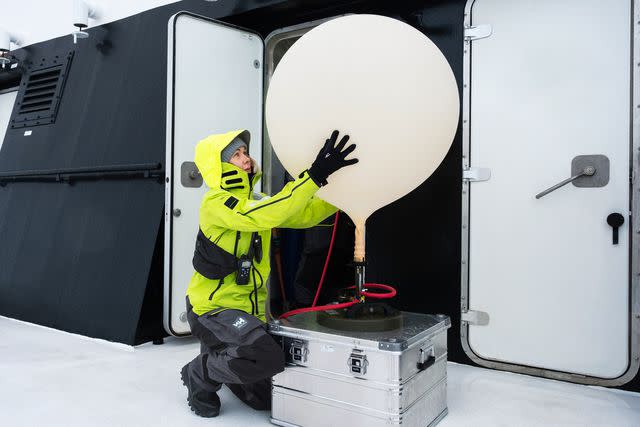
Courtesy of Viking
Prepping a weather balloon aboard Viking Octantis in Antarctica.Coral Expeditions will operate a special citizen-science itinerary on the Great Barrier Reef, departing Cairns, Australia, in October, giving passengers the chance to snorkel while logging species and measuring coral in the company of naturalists. Meanwhile, Lindblad Expeditions has a wide array of citizen-science departures, particularly on polar trips, says spokesperson Vanessa Picariello. “This isn’t a hot new trend for us. This is part of our heritage.”
Keeping Tabs on Animals
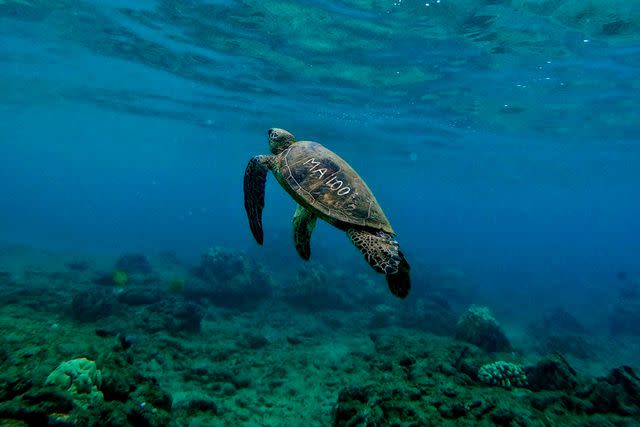
COURTESY OF NOAA FISHERIES
One NOAA study is tracking Hawaiian green sea turtles.Government agencies, including NASA and the U.S. Forest Service, also offer citizen-science opportunities; many of them solicit the public’s input on projects at citizenscience.gov. One example is the Honu Count, run by NOAA Fisheries, which tracks honu, as Hawaiian green sea turtles are known in the islands. The ongoing project has logged nearly 700 sightings of turtles since its beginning in 2017.
In the Pacific Northwest, Columbia River Gorge hikers can assist the Forest Service by snapping geotagged photos of American pikas, small rabbit-like mammals with an adorable, squeaky call. The agency aims to better understand how the population is recovering since the Eagle Creek Fire in 2017.
Monitoring Ecosystems
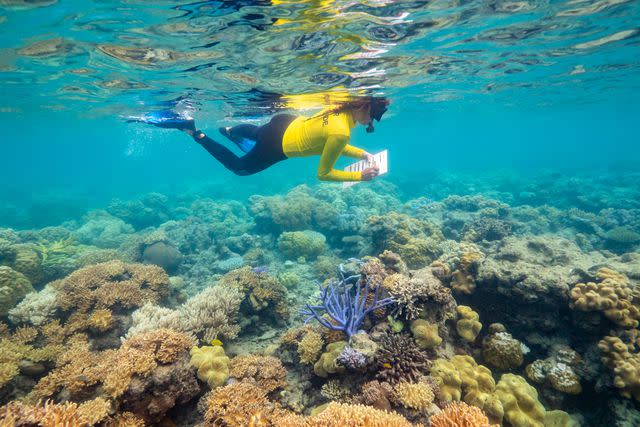
COURTESY OF CORAL EXPEDITIONS;
Counting coral on the Great Barrier Reef on a trip withâwho else?âCoral Expeditions.Citizen Science Departures, a series launched by Exodus Travels, includes safaris in Zambia, cloud-forest treks in Costa Rica, and vineyard visits in Portugal. They have a central theme in common: participants take samples from waterways and share the data collected with eBioAtlas, a project that maps biodiversity around the world.
Beachgoers can lend a hand to the U.S. Army Corps of Engineers with SandSnap. The program aims to create a database of sand-grain sizes, based on close-up photos of shorelines, that will help scientists better understand how tides and waves affect coastal dynamics. Another waterfront program, Nurdle Patrol, is administered by the University of Texas at Austin Marine Science Institute. It recruits volunteers to report sightings of nurdles, small plastic pellets used in manufacturing consumer goods, which are a common marine pollutant.
On Maui, PacWhale Eco-Adventures invites beachcombers to look for marine debris along the shore. The group, which is part of the nonprofit Pacific Whale Foundation, upcycles grain bags donated by Maui Brewing Co. for litter cleanups and encourages visitors to log their efforts with the organization.
A version of this story first appeared in the June 2023 issue of Travel + Leisure under the headline “Study Abroad.”
For more Travel & Leisure news, make sure to sign up for our newsletter!
Read the original article on Travel & Leisure.

